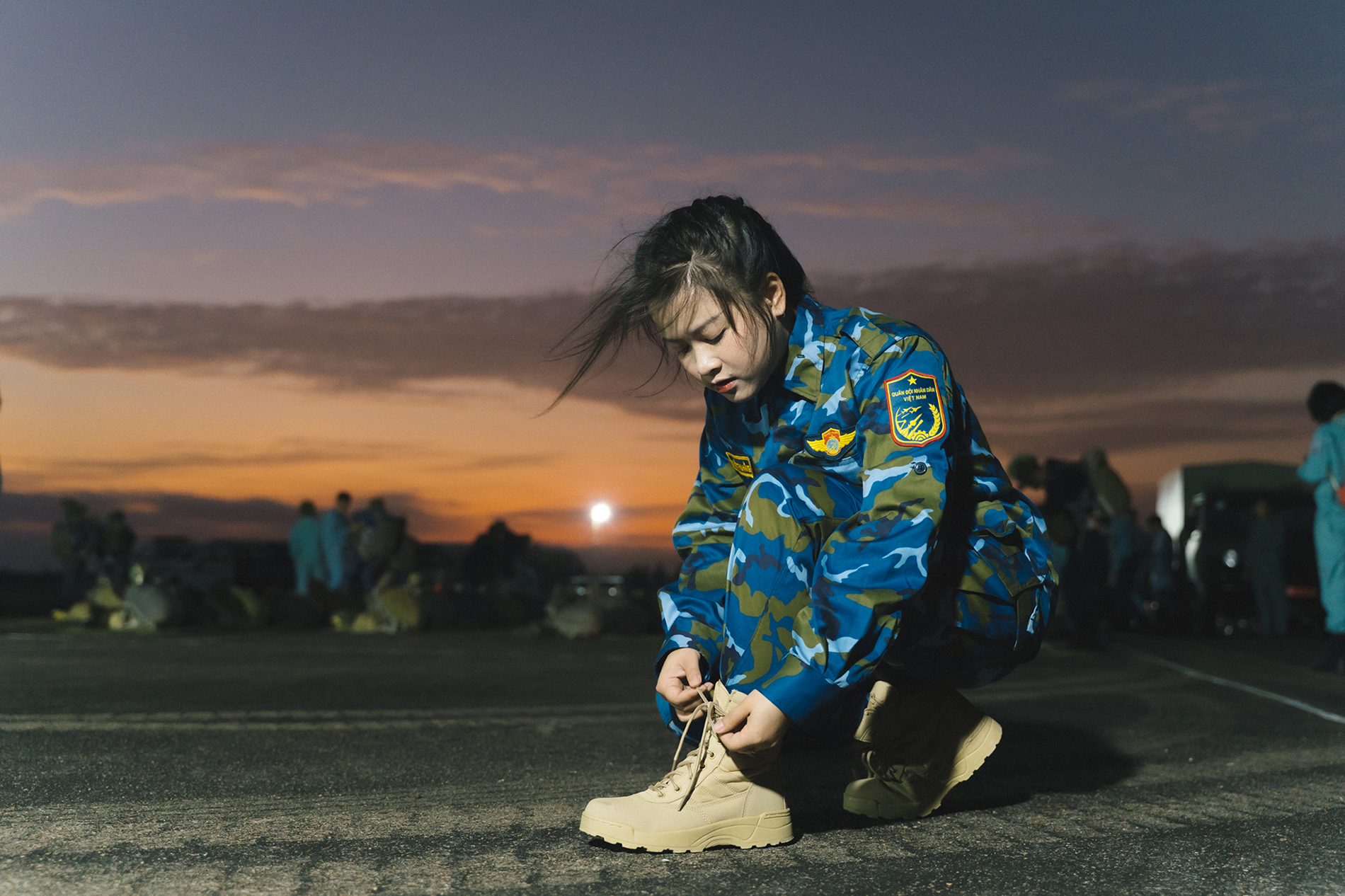
Just over a week after turning 25, Thu Hang from Dien Bien still vividly remembers the moment she leapt from a plane, her parachute opened, and she drifted through the sky before touching down.
The entire experience - from jumping out of the plane to landing - lasted only a few dozen seconds. “Even now, I still feel nervous thinking about that moment when I stepped out of the plane,” Nguyen Thu Hang recalled.
On the early morning of March 26, just one day before her 25th birthday, Thu Hang and about 50 others gathered at Tuy Hoa Airport (Phu Yen) for additional training ahead of their once-in-a-lifetime “three-second” jump.
These were students from cohorts K23 and K24 of the round parachute freefall course, hosted annually by the Southern Aviation Club under Air Division 370.
At 6 a.m., after suiting up with their main and reserve parachutes and completing final safety checks with pilots and instructors, Hang and the other trainees were ordered to march from the staging area to the runway.
Onboard the helicopter, an instructor stood at the edge of the open door, firmly shouting “Jump!” and tapping each trainee on the shoulder. One by one, they executed the maneuver.
When it was her turn, Hang planted her left foot on the edge of the aircraft floor and jumped into the sky. She carefully counted to three before pulling the ripcord to release the parachute and stabilize her posture.
Floating beneath a round canopy that bloomed like a flower at 800 meters, the young woman from Dien Bien widened her eyes to take in the stunning landscape from a bird’s-eye view.
“Jumping from the plane and experiencing those three seconds of free fall before the parachute opens was indescribable. I trained for months and overcame my fear of heights for that precious moment,” she said.
Four months of sweat and tears
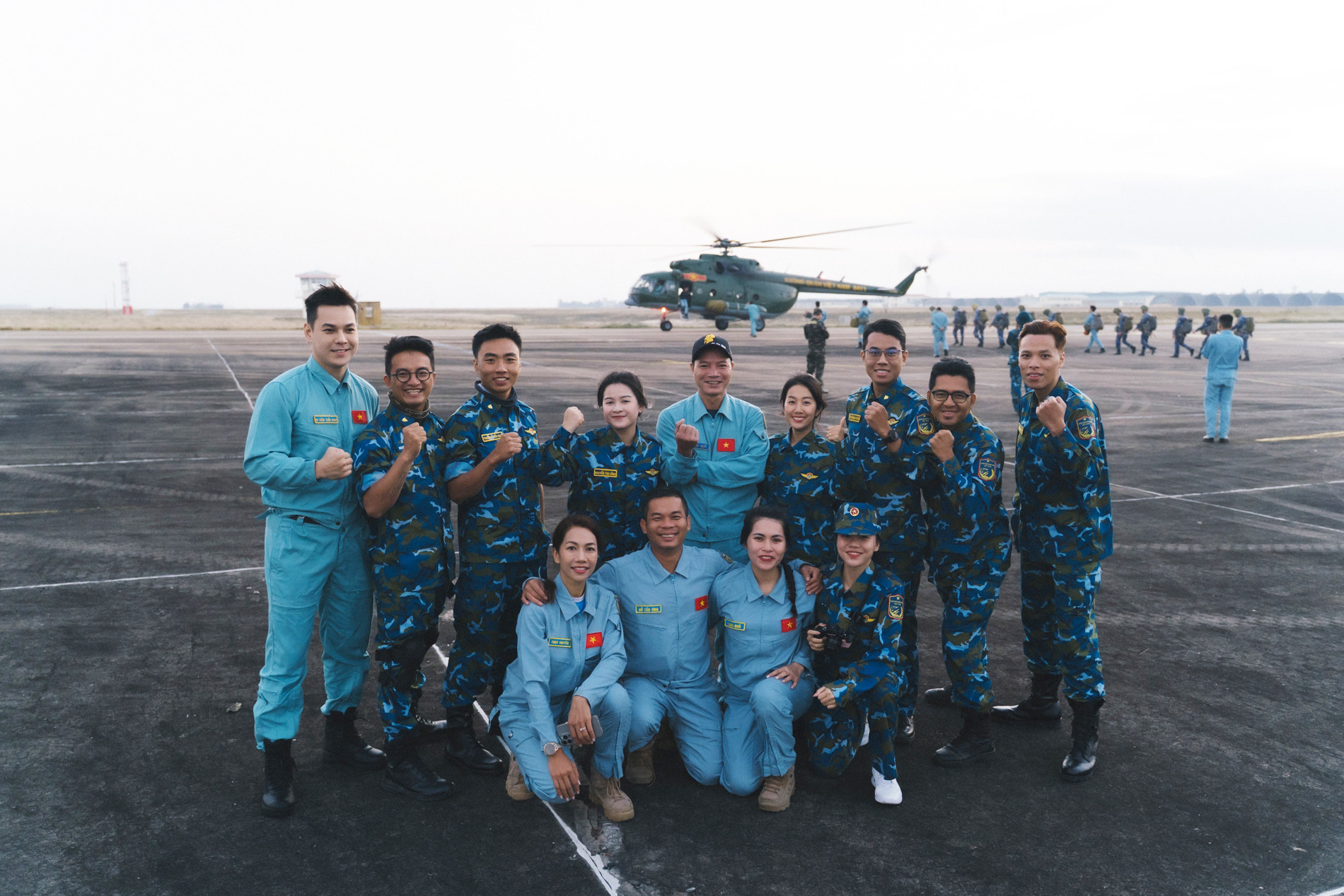
Before discovering parachuting, Hang had twice solo-traveled across Vietnam by motorbike. She had explored everything from mountain peaks to coral reefs, trekking and diving along the way.
“So when I moved to Ho Chi Minh City and heard about the Southern Aviation Club’s parachute training course, I signed up immediately without a second thought,” she said.
To be accepted, Hang had to pass several rigorous health screenings - and rely on a bit of luck.
Once admitted, she and her fellow trainees studied both theory and practice every Saturday and Sunday from 8 a.m. to 5 p.m., mastering every technical movement and safety protocol required of military-style round parachute jumpers.
“Trainees must attend a minimum number of theory sessions and demonstrate proper technique and crisis-handling skills before they’re cleared to jump at military airfields. The course lasts 4–6 months and includes three jump rounds, each at a different airport,” she explained.
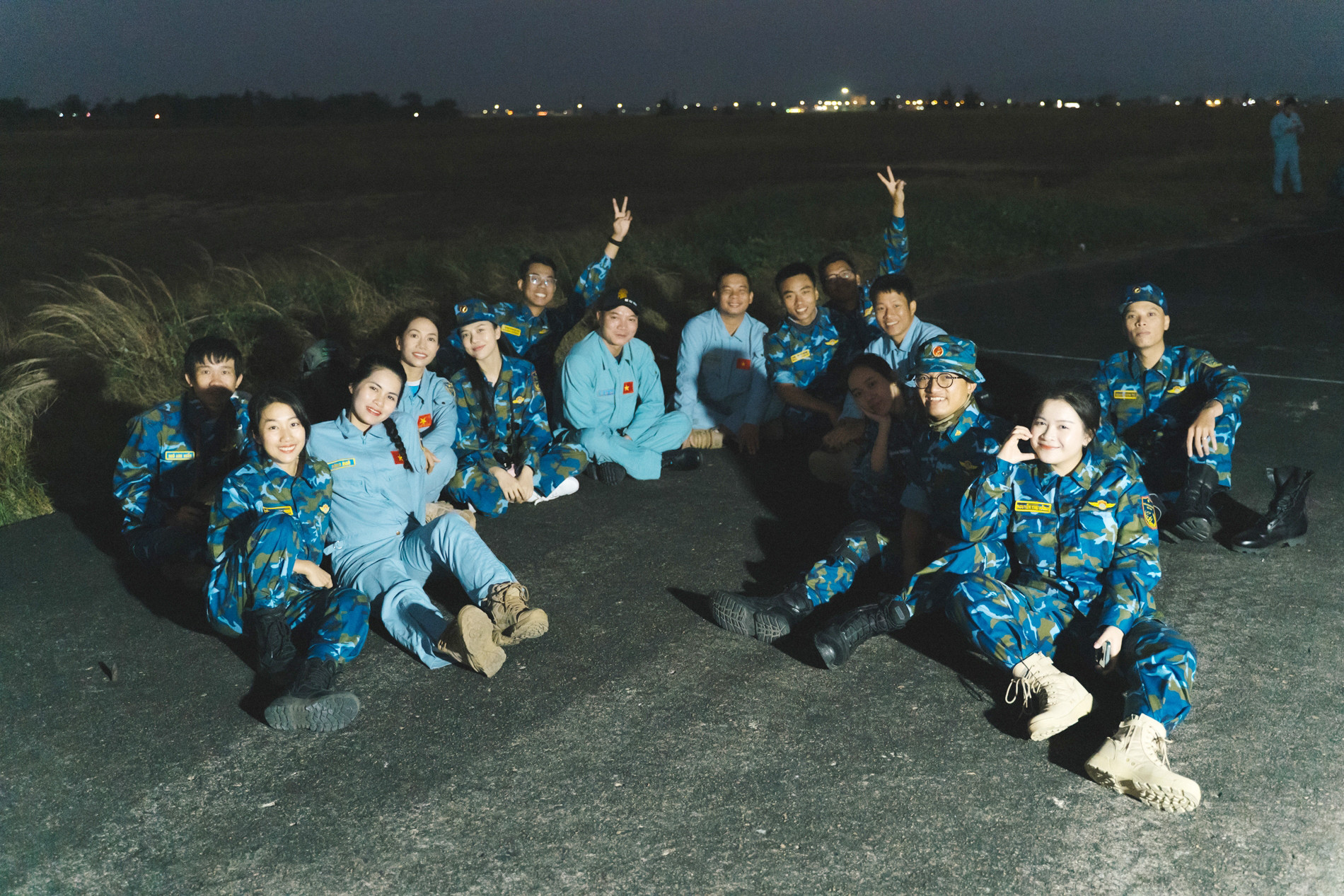
Students must memorize the features, mechanisms, and descent rates of the D6 round military parachute, and they’re trained to steer toward a target, retrieve and properly fold their gear according to safety protocols.
The two most critical actions: jumping from the plane and counting three seconds before pulling the ripcord.
“You also have to master the ‘three-point landing’ stance to avoid injury and learn to handle emergencies in the air - like tangled lines, entangled feet, or mid-air collisions between parachutes,” Hang added. “We practiced these over and over, sweating and struggling until every move became second nature.”
All for three unforgettable seconds

Hang admitted that staying mentally composed during the jump was harder than the physical training itself.
After four months of preparation, students eagerly awaited their jump season at Tuy Hoa Airfield, which runs from late March through July when wind conditions are favorable.
The night before the official jump, everyone rehearsed one final time, then bunked in a military barracks. At 3 a.m., they rose, freshened up, ate, and boarded a vehicle for the airport - still under the cover of darkness.

“We had our blood pressure and heart rates checked, then spent 30 minutes warming up and reviewing key movements before suiting up. Each trainee carried a 12kg parachute backpack. Safety locks were checked by professionals before we headed to the tarmac,” Hang recounted.
On the plane, tension mounted. At 800 meters, nerves were visible on every face. At the command to jump, the first trainee braced at the door and launched into the sky. One by one, others followed, each savoring the moment they’d been training for.
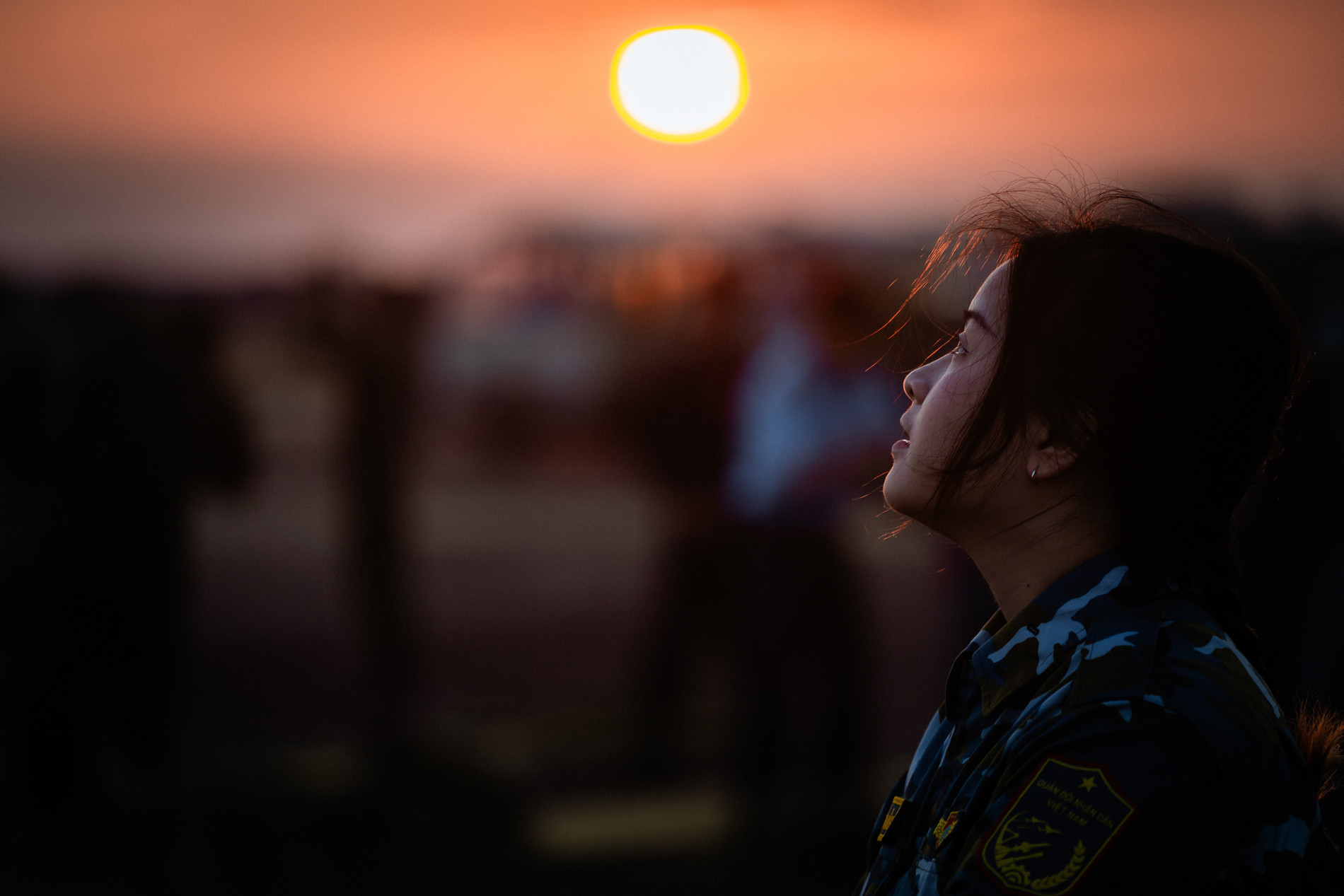
When her turn came, Hang summoned every ounce of courage. She stepped up, jumped, and tumbled into the open air.
One second… two seconds… three. She yanked the ripcord with both hands, and her parachute deployed just as she’d trained, stabilizing her descent.
As she floated slowly with the wind, Hang widened her eyes to absorb the breathtaking view of Tuy Hoa. On one side, the sea shimmered; on the other, fields stretched out endlessly under the bright sky, dotted with white parachutes like giant flowers.
After taking in the beauty, she calculated her altitude and the wind’s direction, steering carefully toward the target and making a safe landing.
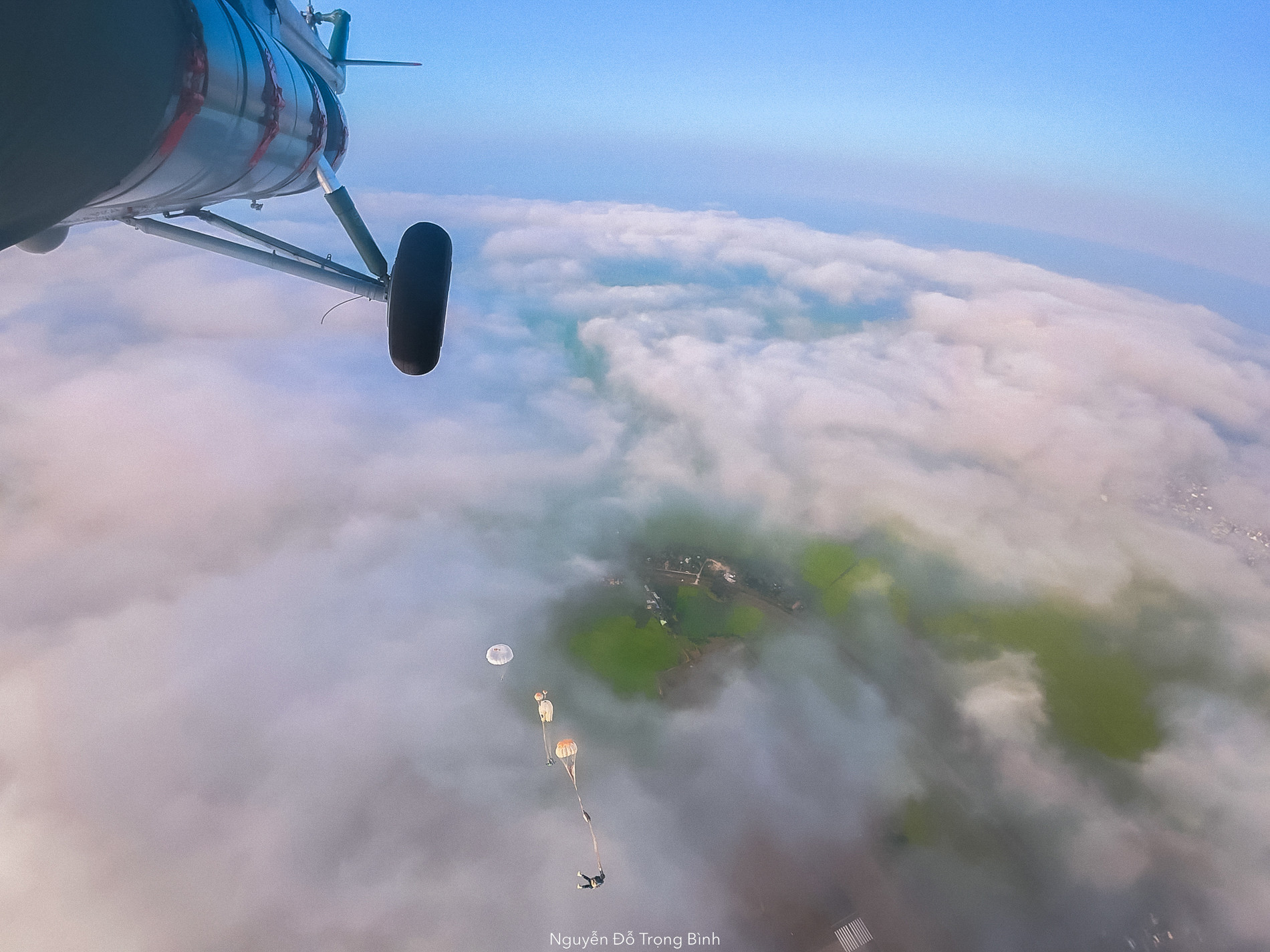
“For me, those first three seconds of free fall were the most emotional, valuable part of it all. I screamed and tumbled until the parachute opened. Once I landed safely, I lay on the grass, watched the other parachutes coming down like petals, and felt so proud. I just wanted to call my family and share the joy,” she said.
To Hang, the jump was one of her proudest, most fulfilling experiences - something rare and exhilarating.
In the coming years, if possible, the 25-year-old from Dien Bien hopes to return and take on new jumps at Chu Lai or Bien Hoa airfields.
Thao Trinh